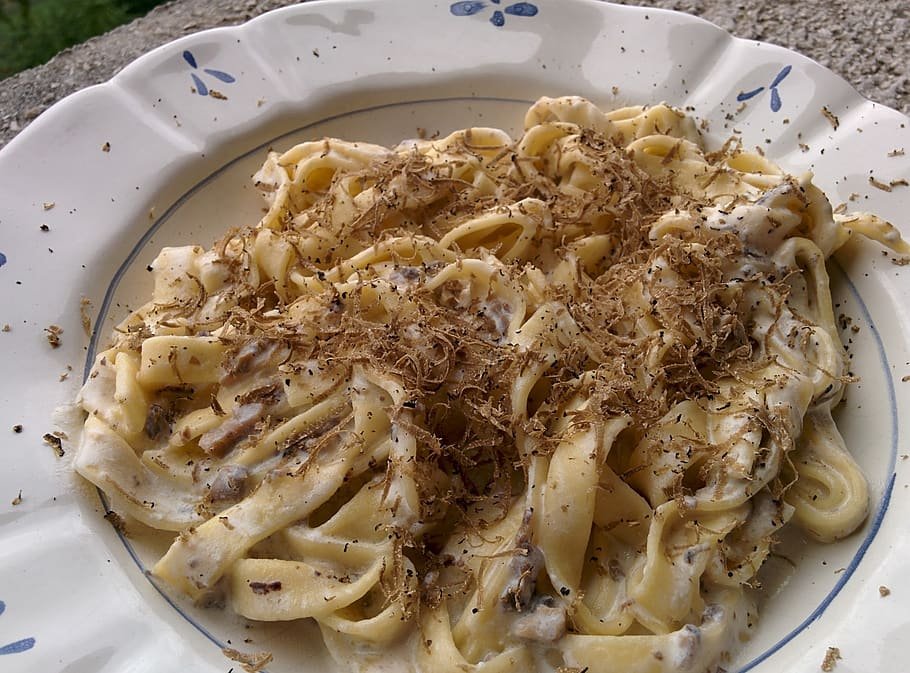Introduction:
Beef Carbonara is a beloved Italian dish that has captured the hearts and palates of food enthusiasts around the world. With its combination of succulent beef, creamy egg-based sauce, and al dente pasta, Beef Carbonara offers a delightful dining experience. In this comprehensive article, we will delve into the origins of Beef Carbonara, explore the key ingredients, master the cooking process, and reveal some secrets to elevate this dish to a culinary masterpiece.
Table of Contents
What is Beef Carbonara?
Beef Carbonara is a classic Roman pasta dish characterized by its creamy texture and umami-rich flavours. The traditional recipe typically features thinly sliced beef, pancetta or guanciale (Italian cured pork), eggs, grated Pecorino Romano cheese, black pepper, and spaghetti. The combination of these simple ingredients results in a sumptuous and satisfying dish that can be prepared in just a few easy steps.
The Origins of Beef Carbonara
The exact origins of Beef Carbonara are shrouded in mystery, with various legends and stories surrounding its creation. One popular theory suggests that the dish was named after Italian charcoal workers known as “carbonari,” who enjoyed this hearty meal to fuel their laborious work. Another tale links the dish to American GIs stationed in Italy during World War II, who mixed their rations of eggs and bacon with Italian pasta to create a comforting dish reminiscent of home.

Key Ingredients for Beef Carbonara
To create an authentic Beef Carbonara, sourcing the right ingredients is crucial. Each component contributes to the dish’s overall taste and texture. Here are the key ingredients you’ll need:
Beef: Opt for tender and thinly sliced beef cuts like sirloin or tenderloin to ensure quick cooking and tenderness.
Pancetta or Guanciale: These Italian cured meats add a delightful smoky and salty flavour to the dish.
Eggs: Fresh, high-quality eggs form the foundation of the creamy sauce.
Pecorino Romano Cheese: This sharp and tangy cheese provides a distinct and robust flavour.
Black Pepper: Freshly ground black pepper imparts a hint of spiciness to balance the richness of the sauce.
Spaghetti: The traditional pasta of choice, which complements the sauce perfectly.

How to Make Beef Carbonara: A Step-by-Step Guide
Mastering the art of making Beef Carbonara is surprisingly simple with the right technique. Follow these step-by-step instructions to prepare a delectable batch at home:
Boil the Pasta: Cook the spaghetti in a large pot of salted boiling water until it reaches the perfect al dente texture. Drain and set aside, reserving a cup of pasta water.
Sauté the Beef: In a separate pan, sauté the thinly sliced beef until it is cooked to your desired level of doneness. Set aside.
Render the Pancetta: In the same pan used for the beef, render the Pancetta or guanciale until it turns crispy. Remove from heat.
Whisk the Eggs: In a mixing bowl, whisk together eggs, grated Pecorino Romano cheese, and a generous amount of freshly ground black pepper.
Combine the Ingredients: Add the cooked pasta to the pan with the pancetta or guanciale. Toss the pasta in the rendered fat to coat evenly.
The Creamy Sauce: Quickly pour the egg mixture over the pasta, using the residual heat to create a creamy sauce. Toss everything together until the sauce thickens and coats the pasta.
Serve and Enjoy: Plate the Beef Carbonara, garnishing with extra Pecorino Romano and black pepper. Serve immediately and savour the delectable flavours.
Tips to Enhance Your Beef Carbonara
Taking Beef Carbonara to the next level requires attention to detail and some creative twists. Here are some valuable tips to enhance your Beef Carbonara experience:
Use Freshly Cracked Eggs: Using freshly cracked eggs enhances the creamy texture of the sauce, resulting in a luscious consistency.
Experiment with Cheese: While Pecorino Romano is the traditional choice, don’t hesitate to try different cheeses like Parmigiano-Reggiano or Grana Padano for unique flavours.
Add Vegetables: Introduce some greens like peas, asparagus, or spinach to add colour and nutrition to your dish.
Spice it Up: For an extra kick, add a pinch of red pepper flakes or a dash of hot sauce to your Beef Carbonara.
Garnish with Fresh Herbs: Sprinkle some chopped parsley or basil on top to elevate the presentation and add a burst of freshness.
Balance the Salt: Be cautious with additional salt as the pancetta or guanciale already contribute saltiness to the dish.
Gluten-Free Pasta: Beef Carbonara can be adapted for people with gluten intolerance by replacing the pasta with a gluten-free variety.

Conclusion
Beef Carbonara is a culinary delight that captures the essence of Italian comfort food. With its creamy texture, savoury flavours, and hearty appeal, this pasta dish has stood the test of time and continues to charm food enthusiasts worldwide. By following our step-by-step guide and incorporating the tips and tricks, you can master the art of making Beef Carbonara and create a dish that delights the taste buds and warms the soul.
So, next time you’re craving a delectable pasta dish, why not treat yourself to the flavours of Beef Carbonara? Buon appetito!
FAQs
What’s the best pasta to use for Beef Carbonara?
Spaghetti is the classic pasta choice for Beef Carbonara, but you can experiment with other long pasta varieties like linguine or fettuccine.
Can I use bacon instead of Pancetta or Guanciale?
While bacon can be a suitable substitute, it may result in a slightly different flavour profile than the traditional ingredients.
Is Beef Carbonara a heavy dish?
Despite its creamy texture, Beef Carbonara can be made lighter by using less cheese and opting for leaner beef cuts.
Can I make Beef Carbonara in advance?
Beef Carbonara is best enjoyed fresh, but you can prepare the individual components in advance and assemble them just before serving.
What wine pairs well with Beef Carbonara?
A medium-bodied red wine like Montepulciano d’Abruzzo or Sangiovese complements the richness of Beef Carbonara.



